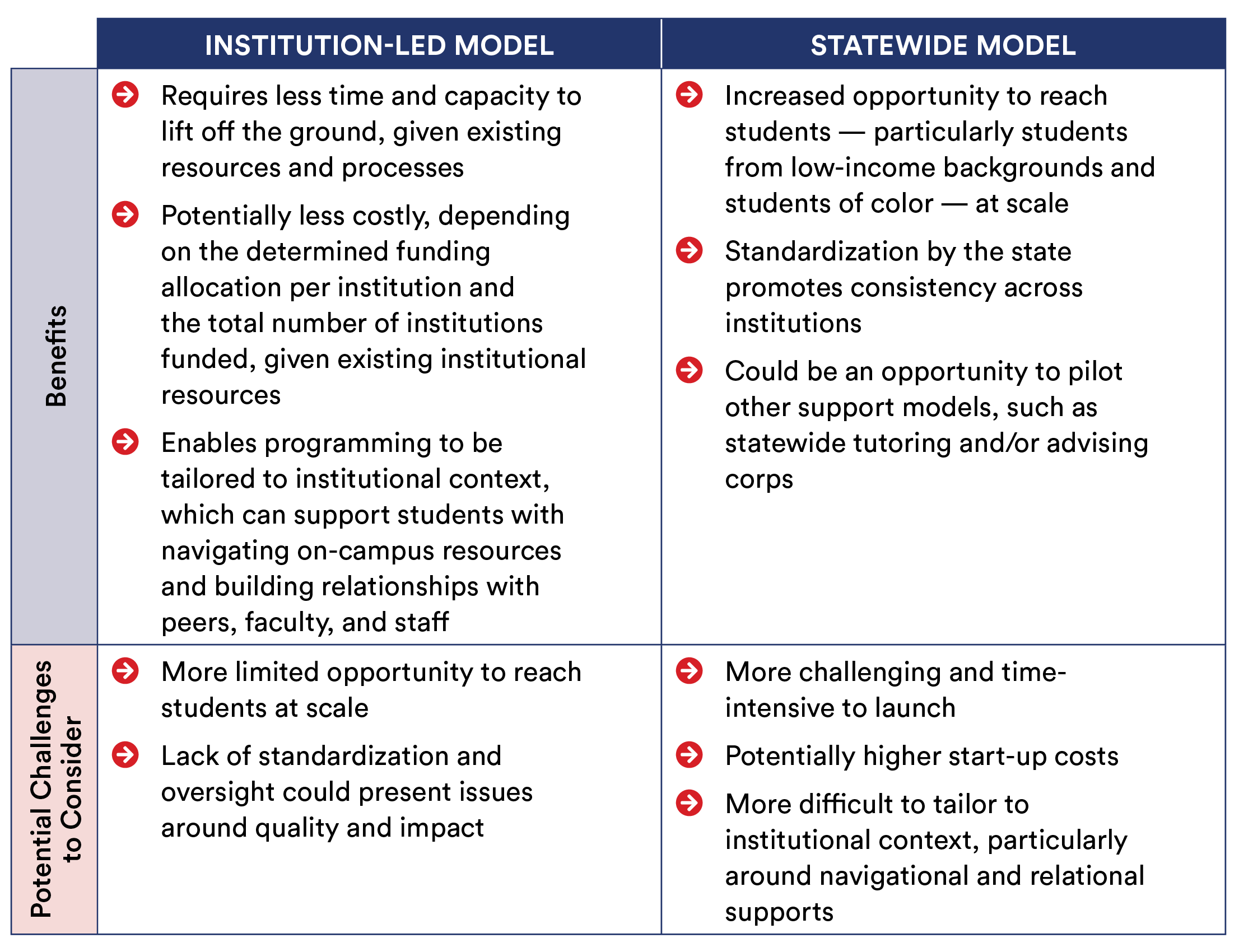Building Summer Bridges: Two Ways State Leaders Can Set Students Up For College Success

Brandon Bond was set to become the first member of his family to attend college. By the time he walked across his high school graduation stage, he was already looking forward to studying at the University of Michigan-Ann Arbor (U-M). While Brandon has always considered himself adaptable to new challenges or environments, at the time, he was unsure of who and what kinds of resources on campus could support him in navigating higher education. “As a first-generation student, I didn’t really know what to expect or what I should be setting goals toward or anything of that nature. I was somewhat worried,” explained Brandon.
Fortunately, U-M offers a Summer Bridge Scholars Program (SBSP) to help students make successful transitions to college. Brandon enrolled in this program and took three courses—CSP 100 (Seminar in Academic Engagement), CSP 105 (Writing and Culture Seminar), and MATH 103 (Foundations in Quantitative Reasoning and Literacy)—to ensure he was academically prepared and built connections with other students who would soon be enrolling alongside him. In addition, Brandon received mentorship from an on-campus Residential Advisor during the summer and, as a Bridge Scholars PLUS participant, a Peer Academic Coach during his first academic year. Indeed, participating in SBSP before the start of his freshman year helped ensure that Brandon was set up for success.
Not all students are as fortunate as Brandon. Every year, one in five graduates who have earned admission to college and intend to matriculate never show up on campus, a phenomenon known as “summer melt.” A myriad of obstacles can disrupt students along their postsecondary education journey; a recent study on students who decided not to pursue or complete a two-year or four-year college program found that 38 percent had fears about the cost of college and amassing debt and 25 percent felt uncertainty about their career trajectories and what they wanted to study.
One intervention that has emerged across colleges and universities to address summer melt and boost matriculation is summer bridge programming—like the one that helped Brandon transition to U-M.
Originally established as a remedial alternative for underprepared learners, these programs have evolved to encompass a throughline of support during the summer months to ensure students successfully enroll in the fall. There is increasing evidence that students in summer bridge programs are more likely to successfully transition into their postsecondary education institution in the subsequent fall semester. In addition to facilitating the transition to the rigors of postsecondary coursework, summer bridge programs also support participants in establishing a robust campus network and building a sense of belonging. These programs can play a critical role in forging relationships among summer bridge students, faculty, staff, and peers through an array of programming components, such as coursework, workshops, and peer-to-peer mentorship.
While many individual colleges and universities have implemented their own programs, to increase the number of students served and to promote quality, state agencies and institutional systems leaders have an important role to play in leading a statewide approach to summer bridge.
When launching a state-level summer bridge program, there are two primary implementation models to consider: the institution-led model and the statewide model.
Institution-led Model
An institution-led model for summer bridge programs is one in which the state’s colleges and universities each run an institution-specific summer bridge program funded by the state. States launch a grant to fund their public and private colleges and universities that wish to host summer bridge programs for their incoming students. Running an institution-led summer bridge program affords each institution the flexibility to customize its program structure and curriculum to cater to its student body. Leveraging the resources at each institution, an institution-led summer bridge program model would require less launch time and capacity.
Statewide Programs
On the other hand, a state may choose to centrally operate and manage its summer bridge program. In these cases,coursework is often delivered in a virtual or hybrid model in order to ensure consistent quality and to reach significantly more students at scale. The state agency or intermediary can then partner with districts and institutions to provide additional relational and navigational supports to help students successfully transition, such as campus visits, tutoring, cohort events, and mentorship.
Which Summer Bridge Model is Right for My State?

Each model has its own set of benefits and potential challenges. In determining which implementation model is best, agency leaders will need to consider factors including the barriers to student success that the program will address, state agency and its partners’ staff capacity, and funding. Whether supporting institutions to lead their own programs or launching a statewide program, implementing high-quality summer bridge programs can be a valuable strategy for states to bolster enrollment and retention.
Importantly, these programs can have a marked impact on individual students like Brandon Bond. “I feel like SBSP was 100 percent fundamental for my development. It’s difficult to make goals when you don’t know what opportunities are out there, and I think having exposure points through SBSP helped with creating a more expansive vision for what I can do.” After completing his undergraduate education, Brandon went on to obtain two master’s degrees in Public Health and Social Work and now works as a Mental Health and Well-Being Student Advocate at U-M.
Check out our latest brief, Bridging the Gap: A State Leader’s Guide to Implementing Summer Bridge Programs, to see how Kentucky, Texas, and Hawaii each designed their state-wide Summer Bridge programs and to access program components and an implementation checklist for each distinct model.



